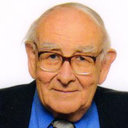On the non-specific antiinflammatory effects of other-than-antirheumatic drugs. Psychotropic drugs, inflammation and antiinflammatory drugs.
Հիմնաբառեր
Վերացական
The interference of non-antiinflammatory drugs with inflammation and with the effects of antiinflammatory/antirheumatic drugs (AIDs) is exemplified by various psychotropic drugs (PTDs). The antiinflammatory action was evaluated in 3 ways: (i) drug effects on bentonite raw-paw oedema after a prophylactic and a therapeutic dose in the same rat, (ii) effect on bentonite oedema of single and repeated administrations (oedema induction in the contralateral paw 7 days later, drug administration continued in the interim), and (iii) effects on traumatic rat-ear oedema of single and repeated pretreatment. Most of the PTDs tested (neuroleptics, anxiolytics, psychostimulants, etc.) suppressed significantly the acute oedema, and some of them (caffeine, nomifensine, lisuride, etc.) also suppressed the fully developed oedema. Many PTDs, when given repeatedly, lost their effects or even aggravated the later phase of inflammation. PTDs can interfere also with the antiinflammatory effects of AIDs, since caffeine and guaifenesin, but not nomifensine, increased the antiinflammatory effects of aspirin and paracetamol, although neither caffeine nor nomifensine interfered with the effect of Auranofin. Therefore in clinical practice the interference of PTDs must be taken account: a PTD taken by the patient can mask signs of acute inflammation (including posttraumatic and postsurgical states). Moreover, the antiinflammatory potential of various analgesic/antipyretic combinations containing a PTD should be considered in view of this interference, since this can sometimes be exploited therapeutically.


